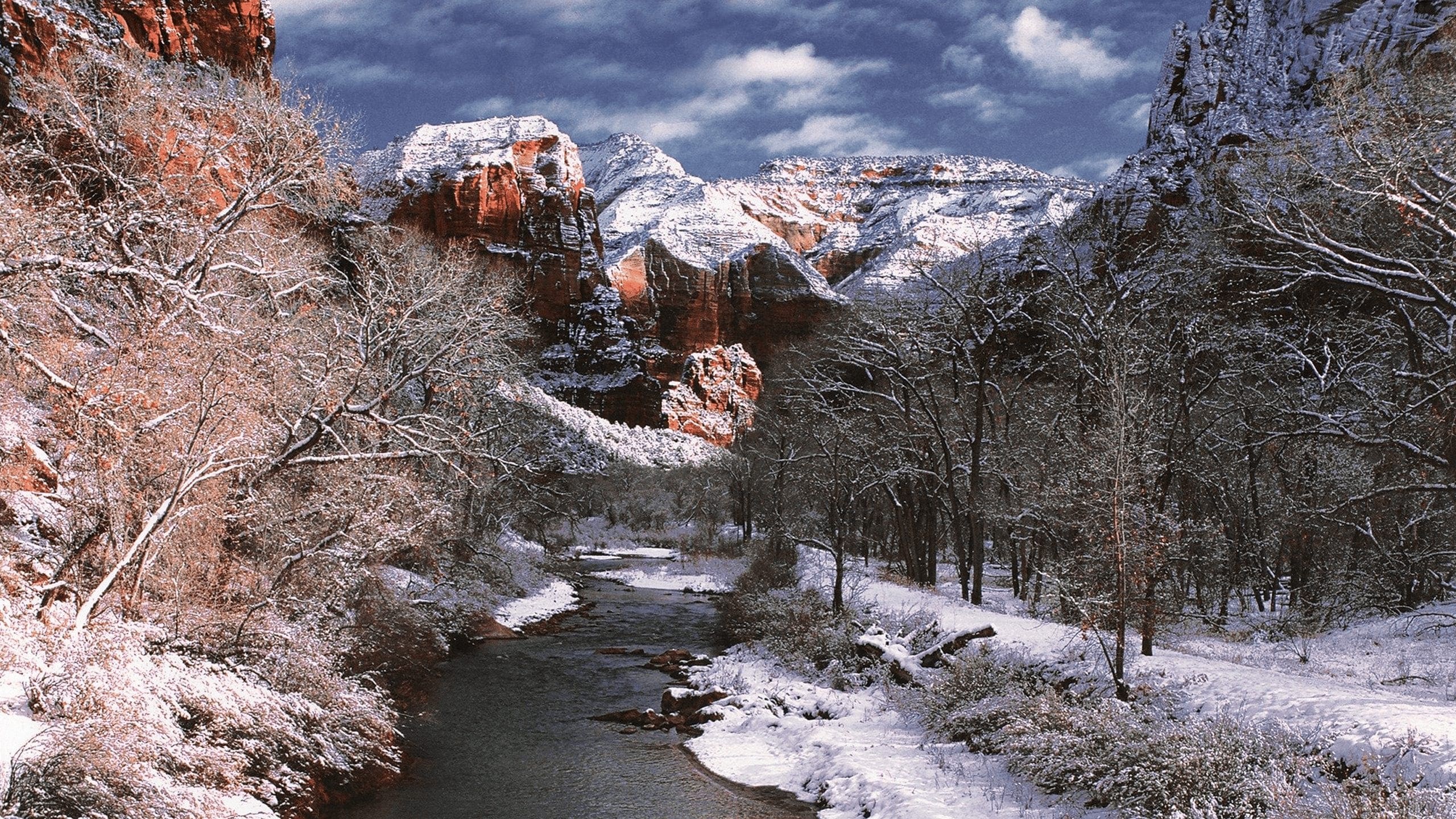Posted: December 4, 2020
Some links provided in this article are affiliate links. Meaning, at no additional cost to you, we’ll earn a commission if you click one and make a purchase. An easy way to help support us if you’re going to buy anyway!
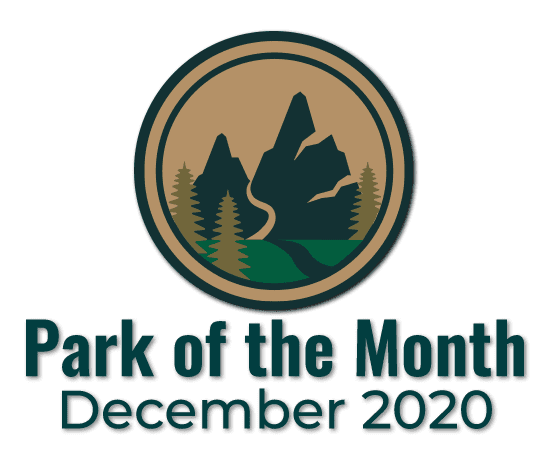
It’s time for our “December 2020 – Park of the Month”! Each month, Discover Our Parks will choose a “Park of the Month” to showcase on our site and why we choose to feature it. We will utilize comments, time of the year and other factors when making our decisions. We might even ask you, our adventurers, which park you think should be next.
Without further delay… what park gets December 2020’s “Park of the Month”???
Zion National Park
“Zion is a geologic showcase of brilliantly colored strata highlighted by sheer Navajo sandstone cliffs that are among the highest in the world and expose ancient remnants of the largest known sand dune system. Geologic processes continue today as the free-flowing Virgin River rapidly cuts into the margin of the Colorado Plateau, incising a multitude of deep, narrow canyons. An abundance of canyon springs, fed by groundwater, create hanging gardens and grottos that support endemic varieties of flora and fauna. These exceptional features and processes contribute to the outstanding scenery and scientific value of the park.”1
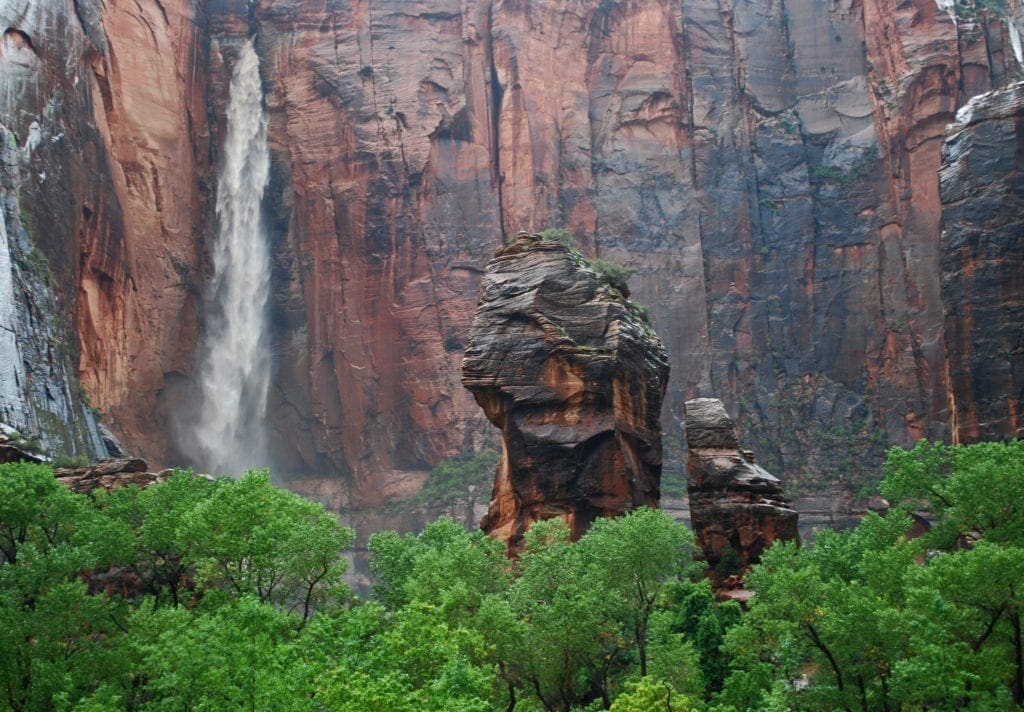
“The Zion Wilderness preserves the undeveloped character and natural environment of the spectacular network of colorful deep sandstone canyons, high forested plateaus, and striking rock towers, as well as opportunities for visitors to experience a strong sense of solitude and remoteness from civilization.”1
“Zion National Park is a world-renowned destination that offers opportunities for a range of recreational and educational experiences including passive activities and high adventure excursions. Visitors are able to step inside the scenery and can find themselves surrounded by narrow cliff walls in places of extraordinary scale such as the Virgin River Narrows. These experiences often create profound emotional and personal connections for a diversity of visitors.”1
SPONSORED ADVERTISEMENT
Why “December 2020 – Park of the Month”?
Why not! This amazing park first started as Mukuntuweap National Monument on July 31, 1909 by President William H. Taft’s proclamation. In 1918, the monument was expanded by another presidential proclamation from 15,200 acres to 76,800 acres and was given a new name, Zion National Monument. On November 19, 1919, congress officially created Zion National Park. In 1956, congress added what is now known as Kolob Canyons and the park currently encompasses 148,733 acres.1
This park is one of the busier parks in the service, but finding solitude seems to be what draws a lot of visitors to this park. The winter time is not down time for the park either. Zion is known for overcrowding in the summer months but winter draws crowds as well, especially this year with the pandemic and people trying to get outdoors.
If you are planning a visit, we recommend following Zion National Park on Twitter. Here they update daily when they will not allow any more visitors into the park or when certain areas are closed due to crowding.
Are you looking for a park to inspire and provide majestic beauty, this is the one!
Check out this amazing short film from Zion National Park, in partnership with the Zion National Park Forever Project.
Before we get into all the amazing things about Zion National Park, you need to be aware of a dangerous situation that is in the park, at the publishing of this post. If you are planning on visiting, be aware that dangerous toxic Cyanobacteria Bloom is currently present in the Virgin River and other park waterways/streams. More information can be found here and some of the below hikes or areas may not be available at the moment due to safety concerns.
The Scenic Drive
Just driving into Zion National Park is a scenic drive. “Hwy 9 is the major road providing access to the park. It winds past the park visitor center and museum, and past many famous Zion landmarks. It provides access to Zion Canyon (accessible by shuttle only during the tourist season) and then goes through the park’s mile-long tunnel. It cuts through the park’s Checkerboard Mesa area”2 as well.
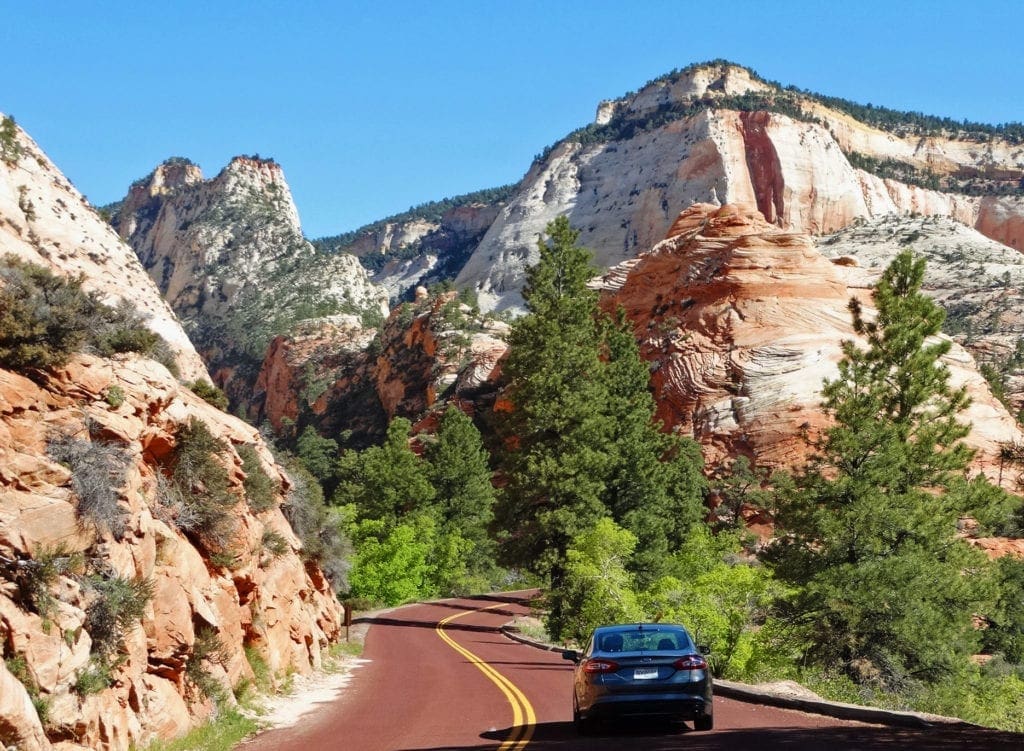
If you are planning on driving through the park, be aware that the tunnel has height and width restrictions. The road is very curvy in spots and has a ton of beautiful overlooks. From March through November, access to the Zion Canyon Scenic Drive is by shuttle bus only. This is due to crowding and safety concerns.
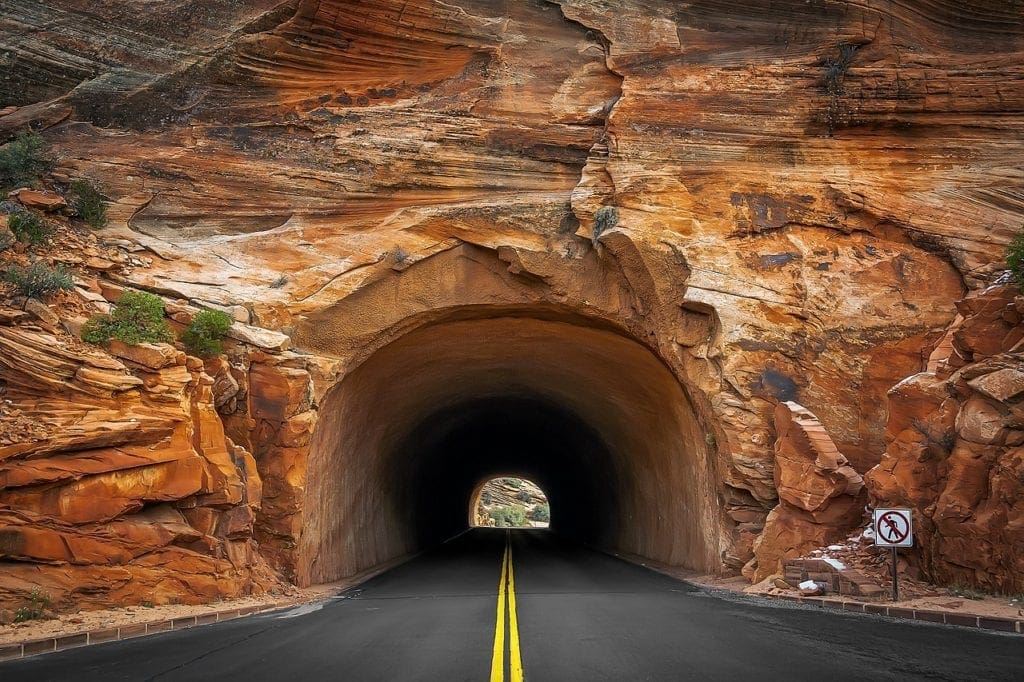
For more information about the shuttle service, click here.
Hiking
“Hiking the trails of Zion National Park can provide lasting memories, but this environment can be harsh and unforgiving.”3 With that said, here’s a few of the trails within our Park of the Month that we recommend, with varying levels of difficulty. The park has 5 different areas or ecosystems and we are including at least 1 hike from each one of these areas.
Our first suggestion is a moderate hike in the Zion Canyon area. This area of the park is by-far the most crowded. It is what most visitors come to see and experience. The Watchman Trail is a 2 hour, 3.3 mile round-trip, hike that provides fantastic views. “This trail [does] not actually climb to the heights of the Watchman Spire itself, but [provides] visitors with a great view of the valley beneath its great stature. Not overly long, and climbing less than 400 feet in elevation, this trail is great for the Zion novice or veteran.”4
“The trail is surrounded by desert greenery on all sides. Hardy shrubs and evergreen trees give the occasional shade along the trail, and prickly pear cactus is prevalent—requiring parents to watch their little children closely. This trail is exposed to the strength of the sun for nearly the entire route, meaning that visitors should take plenty of water and avoid hiking during the afternoon heat of a summer day if they are unused to the Southern Utah climate.”4 Download the NPS Guide and Map for this hike.
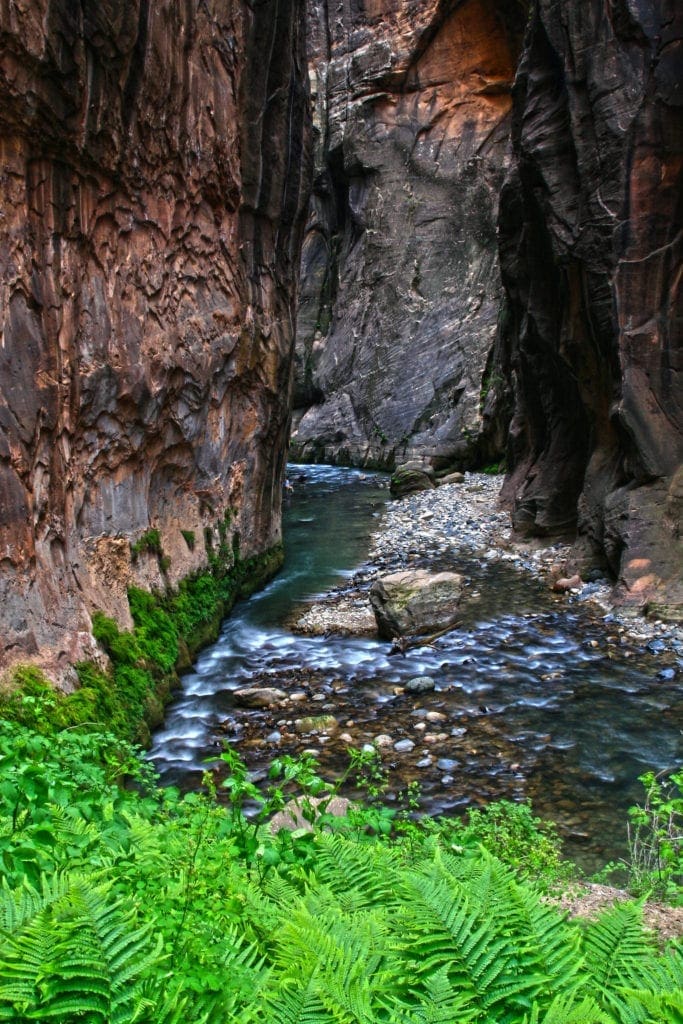
Since the Zion Canyon area is one of the busiest, we are including a second trail for this area. Our second suggestion is a more strenuous hike of The Narrows, starting from Chamberlin’s Ranch and hiking down-stream through the Narrows. This hike requires either a canyoneering permit for a one day hike or a backpacking permit if you choose to split this 10-14 hours, 16 miles one-way, hike into 2 days. “Walking in the shadow of soaring walls, sandstone grottos, natural springs, and hanging gardens can be an unforgettable wilderness experience. It is not, however, a trip to be underestimated. Hiking the Zion Narrows means hiking in the Virgin River.”5
“At least 80% of the hike is spent wading, walking, and sometimes swimming in the river. There is no maintained trail; the route is the river. The current is swift, the water is cold, and the rocks underfoot are slippery. Flash flooding and hypothermia are constant dangers. Good planning, proper equipment, and sound judgment are essential for a safe and successful trip.”5
Local outfitters provide one-way shuttle services to make getting to the start at Chamberlin’s Ranch simpler. They also can provide the necessary equipment needed or even guided hikes. Click here for more detailed information about this hike. We also suggest getting a National Geographic Trails Illustrated Map for this hike.
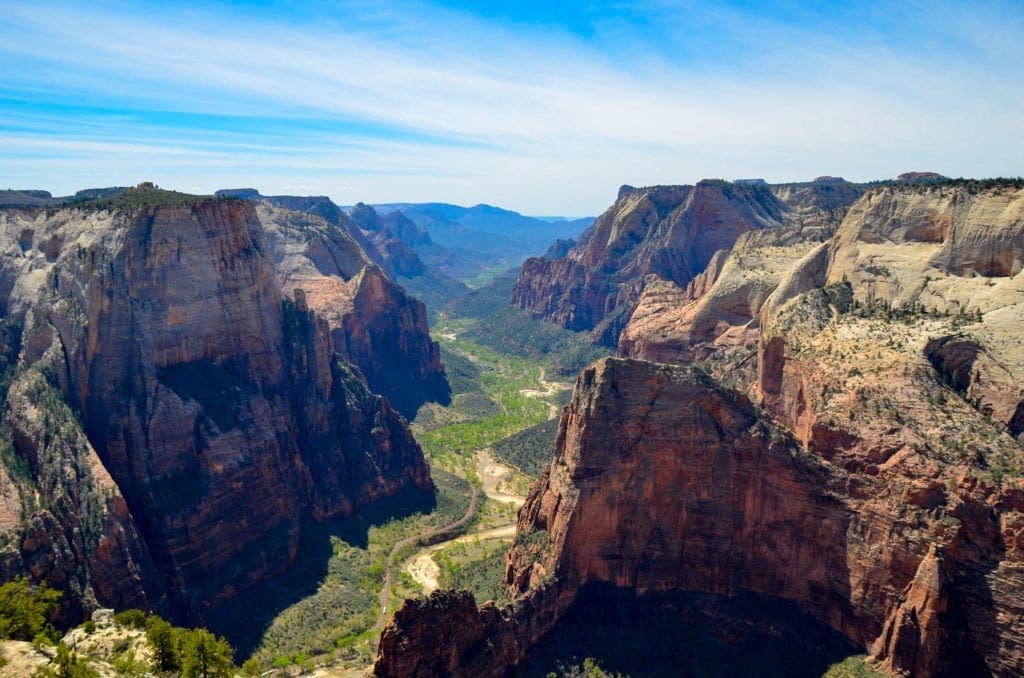
Our next suggestion is in the East Rim Wilderness area and is aptly named the East Rim Trail. This moderate to strenuous 8-14 hour, 21.2 miles round-trip, hike to Observation Point, used to be connected to the Zion Canyon area, but due to a major rock slide in the Weeping Rock section, this section of the trail is closed until further notice.
Starting just past the east park entrance, “the trail heads up to the plateau with views of sandstone cliffs all around. A hike through ponderosa forest eventually leads to Stave Spring and the junction with Deertrap and Cable Mountain, or hikers can continue on the East Rim Trail and descend down into Echo Canyon, towards Observation Point”.6 Download the NPS Wilderness Guide and Map for this hike.
SPONSORED ADVERTISEMENT
Next on our Park of the Month hiking list is in the Southwest Desert Wilderness area. This area of the park only has two trails. The Coalpits Wash Trail is, in our opinion, the more scenic of the two.
This 4 hour, 7.2 mile round-trip, hike starts “on a well defined path near the creek in Coalpits Wash for almost 2 miles, to the junction with Scoggins Wash. Hikers can go left, following Coalpits Wash, or go right into Scoggins Wash from here. Neither route has a trail, just follow the wash as far as you want to go. The hikes follow the bottom of drainages with interesting formations. Both routes eventually meet with the Chinle Trail. Wildflowers are great here during the spring. The route has little shade and can be extremely hot in the summer.”7
If you wanted to, you could go up one wash and return via the other. You can also make a longer day, or overnight trip out of this by taking both the Coalpits Wash trail and looping back on the second trail in this area, the Chinle Trail. You would need to arrange transportation from the trailheads or use two vehicles.
If you plan to do this hike overnight, remember backpacking permits are required for all overnight backcountry stays in the park. Also, remember that these two hikes are in the desert. Make sure to go prepared and avoid these in the hot summer season, but they are great for the winter months. Download the NPS Wilderness Guide and Map for this hike.
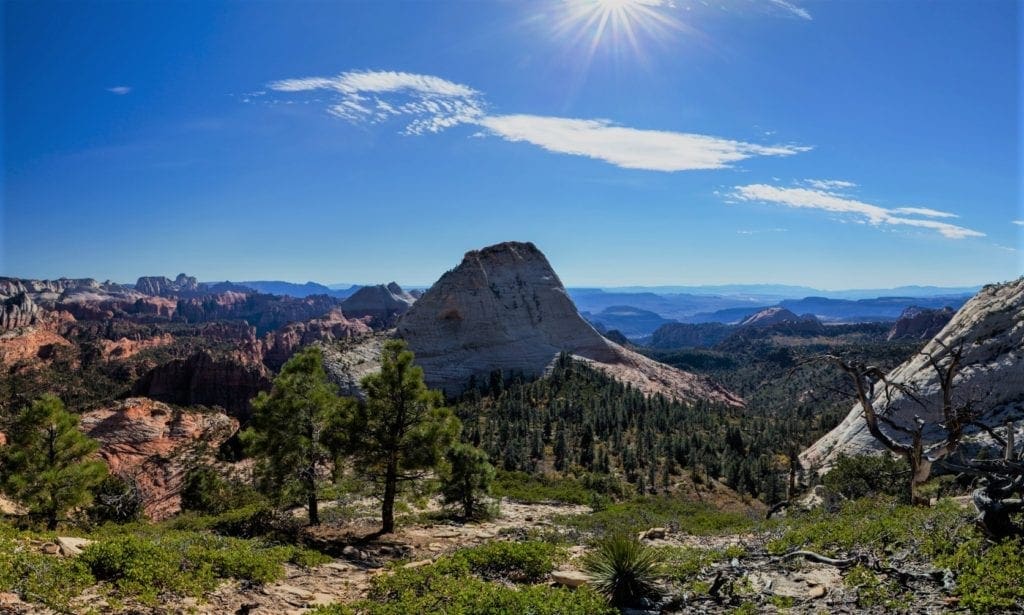
The next hike is in the Kolob Terrace Wilderness area. This is the true high-country of Zion National Park. The area has numerous day hikes, but we recommend the Northgate Peaks Trail. This easy 2 hour, 4.2 mile round-trip, hike is a perfect way to see the park that most visitors normally do not experience and is a great hike for the entire family. Just getting to the trailhead via the Kolob Terrace Road is an amazing drive.
The hike starts at the Wildcat Canyon pullout and “turns off the Wildcat Canyon Trail and leads hikers to the Northgate Peaks. The trail wanders through quaking aspen and mixed conifer forests before arriving at a beautiful viewpoint overlooking the Northgate Peaks, Guardian Angels, and other rugged mountains of the Zion Wilderness.”8 Download the NPS Wilderness Guide and Map for this hike.
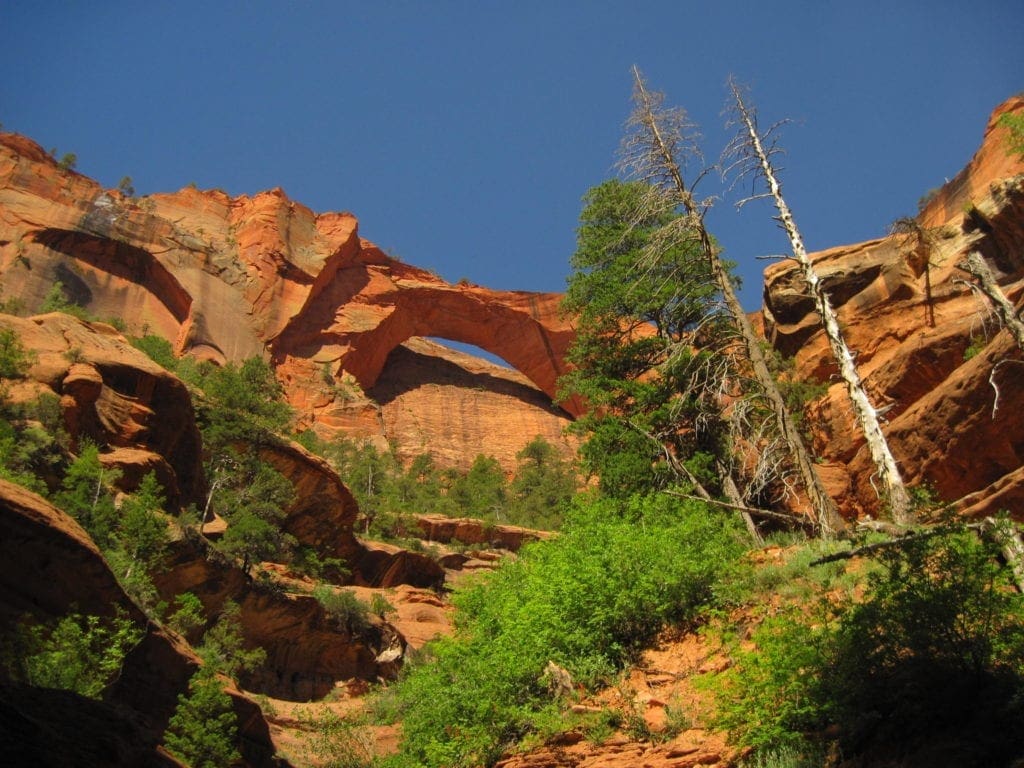
The last area on our hikes list is the Kolob Canyons Wilderness area. This area was the start of the European exploration of Zion National Park with two monks, Padres Silvestre Vélez de Escalante and Francisco Atanasio Domínguez. “The padres passed near what is now the Kolob Canyons Visitor Center on October 13, 1776, becoming the first people of European descent known to visit the area.”9
Our suggested hike in this area is the La Verkin Creek Trail. This moderate 8 hour, 14 mile round-trip, hike “allows hikers outstanding opportunities for solitude in a primitive area of Zion Wilderness. The trail begins at Lee Pass with stunning views of the Kolob Canyons as it crosses Timber Creek and continues to descend toward La Verkin Creek. After seven miles a spur trail leads hikers to a viewpoint where they can see the Kolob Arch. With a span of 287 feet and a thickness of 75 feet, the Kolob Arch is one of the world’s largest natural arches.”10 Download the NPS Wilderness Guide and Map for this hike.
SPONSORED ADVERTISEMENT
Camping & Lodging
Our December 2020 – Park of the Month pick has numerous options for staying overnight within the park. Camping can be done at one of the below three campgrounds. If you are not the camping type, the Zion Lodge might be a better option. And for the adventurous type, backcountry camping on a backpacking hike might be your thing too. Here is some general information about each of these.
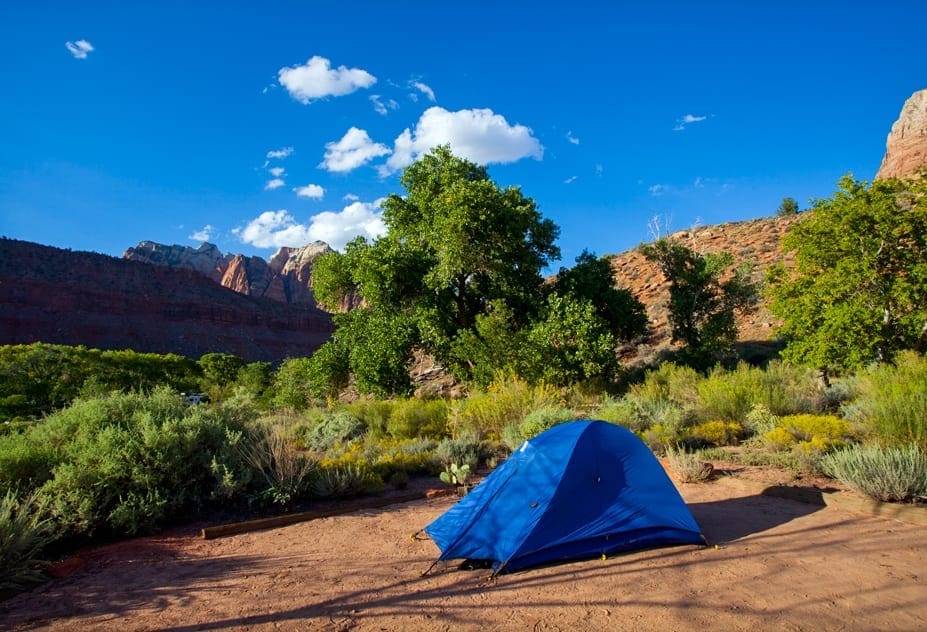
In the winter season, camping is only available at Watchman Campground. “Watchman Campground is located ¼ mile from the South Entrance. Tent and electric campsites are available year-round and group campsites are available by reservation from March through October. There are 190 regular sites, 7 wheelchair accessible sites and 6 group sites.”11 More information about Watchman Campground can be found here.
In the warmer seasons, South Campground and Lava Point Campground are other options.
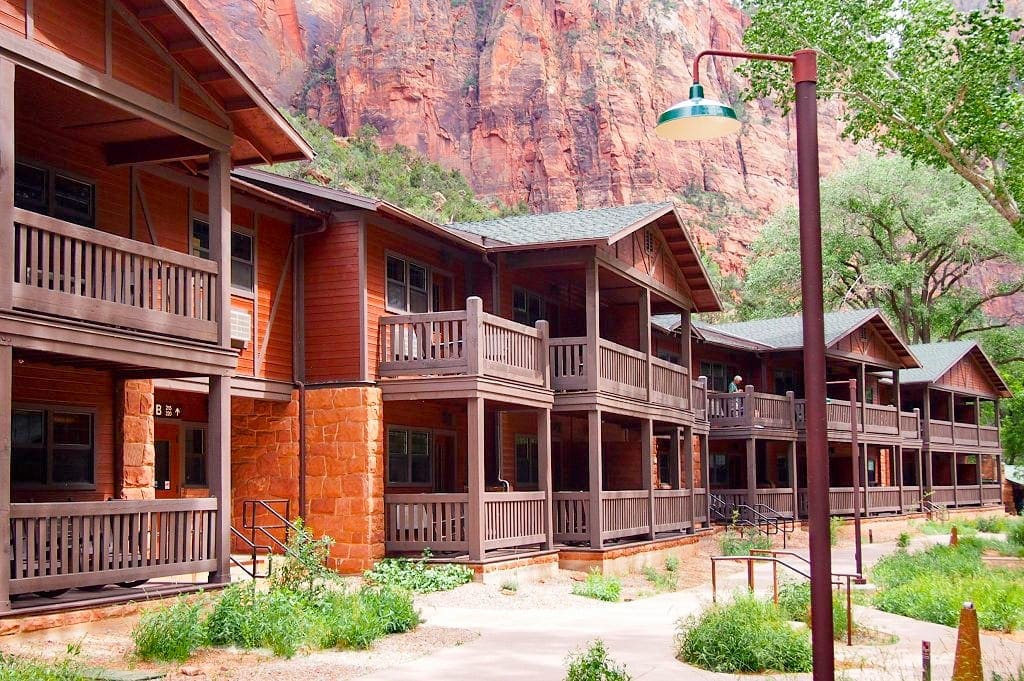
Zion Lodge has cabins, suites and hotel rooms available (we suggest the cabins if you can get one). The lodge is open year-round and has special winter rates if you are visiting this time of year. The historic cabins provide two double beds, a full bath, a gas log fireplace and a private porch. Most of the hotel rooms and suites have two queen-size beds, a full bath and a private porch or balcony. For more information about this amazingly beautiful lodge and to book your stay, visit their website here.
For the adventurers out there, backcountry camping is an option. Depending on what area you are planning to visit or hike, you will need either a Canyoneering Permit or a Backpacking Permit. Wilderness permits must be obtained in advance of your trip online at zionpermits.nps.gov. More information about wilderness trails and campsites can be found here.
For more information about Zion National Park, December 2020 – Park of the Month, and to plan your trip, visit our park page, which includes specific information about the park status in regards to Covid-19. Be sure to check out the more detailed About the Park page with information from the park’s Foundation Document.
Have you been to Zion National Park or have a comment regarding our choice? Let us know below in the comments section.
Help support Discover Our Parks by becoming a Patron for as little as $1 a month! Your support will help us continue to provide articles like this and add even more information about our parks to this site.
If you want to make a one-time donation, buy us a coffee!
‘We got some of the above information from the following:
1: NPS – Zion National Park Foundation Document
2: Utah.com – Zion National Park Scenic Drive
3: NPS – Zion NP – Zion Canyon Trail Descriptions
4: Utah.com – Hiking Watchman Trail
5: NPS – Zion NP – The Narrows – From the Top Down
6: NPS – Zion NP – East Rim Wilderness Trail Descriptions
7: NPS – Zion NP – Southwest Desert Wilderness Hiking Trails
8: NPS – Zion NP – Kolob Terrace Wilderness Trail Descriptions
9: Wikipedia – Zion National Park
10: NPS – Zion NP – Kolob Canyons Wilderness Hiking Trails
11: NPS – Zion NP – Watchman Campground
Check out these recent posts from Discover Our Parks:
- The Isolated Black-bellied Salamander: Wildlife of the Week – 2023 Week 22
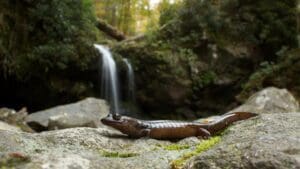
- The Splendid Sandhill Crane: Wildlife of the Week – 2023 Week 21
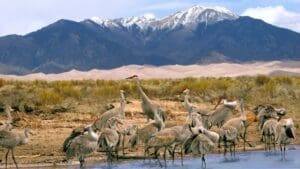
- The Promising Peregrine Falcon: Wildlife of the Week – 2023 Week 20
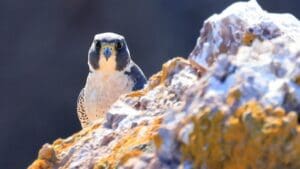
- The Intimidating Killer Whale: Wildlife of the Week – 2023 Week 19
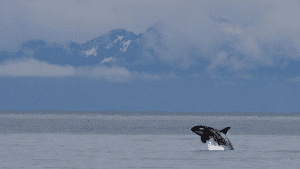
- The Swift Fox: Wildlife of the Week – 2023 Week 18
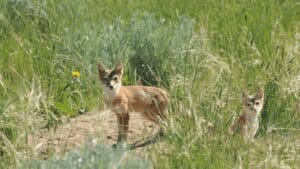
SPONSORED ADVERTISEMENT

